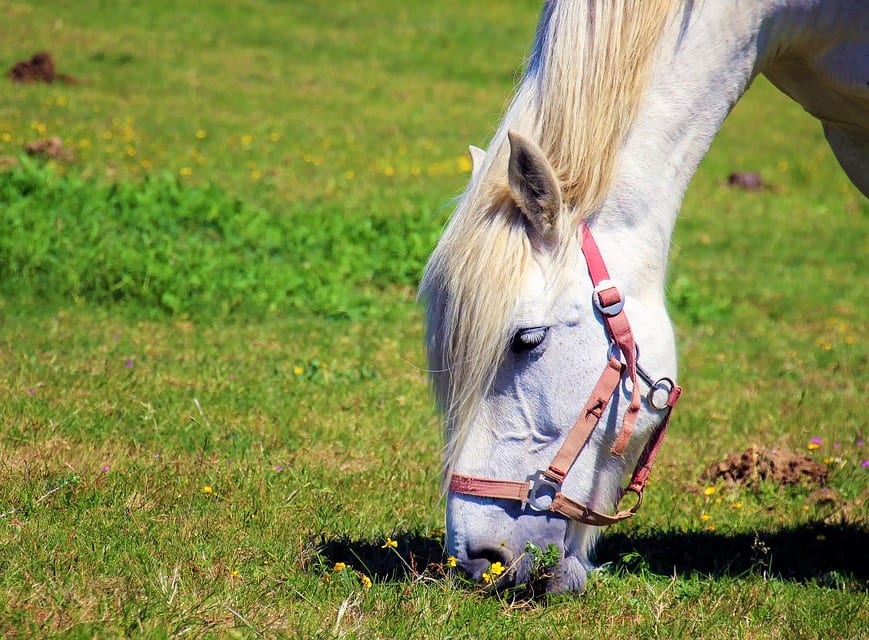
08 Jun Laminitis in the Horse – by Dr Brad Hampton
Laminitis refers to inflammation of the tissue which connects the pedal bone to the hoof wall. It is characterised by hot and painful feet and obvious lameness when moving. The lameness may vary from a mild shuffling to an actual reluctance to move or may get to the point where the horse is too sore to even stand.
Severe cases may progress to a point where the inflamed connections (laminae) actually give way and the pedal bone separates from the hoof wall, the tip of the bone being forced down towards the sole.
CAUSES
The causes of laminitis are many and varied, as the term laminitis refers to all conditions in which the connective tissue is damaged and becomes inflamed and painful.
The simplest cases are concussive laminitis, which, as the name suggests, is the resultant damage from excessive loading on the foot while working. Pounding the ground (particularly at the gallop on firm surfaces) overloads the connective tissue and leads to tearing of some of the laminae.
Treatment involves the use of anti-inflammatory drugs, reduced workload until the hoof repairs and ensuring regular and correct farriery. Low heel long toe foot conformation is a contributing factor in this type of laminitis, and unfortunately has become quite common in modern thoroughbred types.
Concussive laminitis should be differentiated from the following more severe problems which involve the whole animal (these are called systemic diseases).
Overweight/Obesity
The first is the typical FAT PONY PROBLEM. Overweight/obese animals are more susceptible to laminitis as excess fat stored in the body over time affects the function of other organs. Chronic fat overload disrupts liver function and leads to reduced tissue sensitivity to insulin. As a result, glucose is not removed efficiently from the blood into tissues such as muscle (this is similar to the problem with people who are chronically overweight and subsequently develop diabetes).
This high level of blood glucose stimulates more insulin production and it is probably this high circulating insulin level that actually triggers a laminitic episode. These horses also seem to over respond to a carbohydrate meal (one that contains sugars and starches), resulting in an excessive increase in insulin which may then trigger the problem.
It is clear then that management of these horses focuses on 1) reducing bodyweight and 2) restricting access to water soluble carbohydrate (WSC = starch + sugar). This can be achieved by a combination of exercise to help burn off body fat, and the feeding of low energy high fibre feeds.
To achieve this;
- Avoid whole cereal grains which are relatively high in energy and WSC.
- Feed moderate quality hays and chaff – export hay has a high WSC content, lucerne and meadow hays generally have a higher energy content than cereal hays.
- Control access to feed – a side effect of this disruption to metabolism is that the body doesn’t signal that is has had enough so these horses will always be hungry and will just keep eating.
- Severely restrict access to pasture as the WSC levels can be highly variable. Fast growing spring pastures can be particularly dangerous. If animals have to spend time on pasture, restrict to morning grazing as sugars build up during the day when the plant is photosynthesising and are then metabolised overnight. Note: if it is a frosty night, metabolism will be slowed and sugar content may still be high in the morning.
- Exercise regularly if possible – this has the double benefit of burning energy and building more muscle which burns more energy.
- Look for feeds that claim to be slowly digested and don’t cause a sudden surge in blood glucose levels, i.e. have a low glycemic index.
If you are not sure about what you should be feeding, you can get a free diet analysis and plan from our expert nutritionist Jill Davies.
Feed Induced
The second common cause of laminitis is FEED INDUCED. Even horses in normal or thin condition can be at risk if they are suddenly given a meal excessively high in very digestible carbohydrate.
Although they can efficiently digest starch and sugar in the small intestine, even horses used to concentrates can get into trouble if they receive a meal excessively high in WSC. Problems can occur at two levels; firstly, the sudden surge in blood glucose may induce an over response to insulin production and trigger a laminitis event directly.
Secondarily, the level of starch and sugar may exceed the digestive ability of the small intestine and soluble carbohydrate will escape into the large intestine. Oversupply of starch to the hind gut can induce a toxic acidic environment, causing the death of some species of micro organisms. Under extreme conditions, this will also be toxic to the whole animal and cause laminitis.
Horses that are adapted to grain have a hind gut population that is also adapted to utilising some starch, and it is only under extreme conditions that they will run into trouble. This is obvious since most horses that are doing regular exercise and competition are on cereal grain based rations and are in good health.
Management of laminitis-prone horses and ponies
Here are a few rules to help keep them healthy:
- If new to grain, build up to the full ration of concentrate over a 7 to 10 day period – this allows the hind gut bugs to adapt.
- If working hard and on big feeds, e.g. 5 to 6kg concentrate, split into 2 or 3 feeds per day. This reduces the chance of the small intestine being overloaded.
- Base your rations on cereals that are well digested in the small intestine. Oat starch is the most completely digested, followed by barley and maize. Wheat is very high in starch which is poorly digested in the horse’s small intestine; I generally don’t recommend it for horse feed. Heat processing will improve the digestibility of cereals.
- Use scales and know the weight of the feed your giving – this avoids underfeeding as well as overfeeding.
- Make sure adequate roughage (hay/chaff/pasture) is provided – this helps keep the hind gut healthy. As a general rule, horses eat around 2% of their body weight daily. So, a 500kg horse needs 10kg daily. The mix of concentrate to roughage depends on the level of work (i.e. the energy requirement). The following works well for the majority of horses;
Light Work – 3kg conc. 8kg rough.
Moderate Work – 4kg conc. 6kg rough
Heavy Work – 5kg conc. 5kg rough.
- Monitor the horse’s condition and adjust accordingly – too much energy for the workload and the horse will get fat, not enough and it will lighten off.
Thompson & Redwood make a range of feeds to suit all horse needs. These have been scientifically formulated to provide a safe palatable basis for your horses’ rations, using only the best quality local produce.
Using a Supplement
If you have a laminitis-prone horse or pony, using a laminitis supplement before high-risk periods like spring, can reduce the risk of laminitic attacks. The Dodson and Horrell ‘Lami-Free’ Herbal blend is a specially formulated laminitis supplement that is available to purchase in Australia. Formulated in 1993, it contains three different wild crafted herbs. The main ingredient, nettle, is a natural antioxidant and reputed to support the circulatory system.
Seaweed and Rosehips are also included to contribute to the nutritional support for healthy hoof growth, which can vary widely between horses. All of these herbs are suitable to be part of the dietary support for horse or ponies prone to, or who have suffered from laminitis in the past. They can be purchased from the T&R online store.


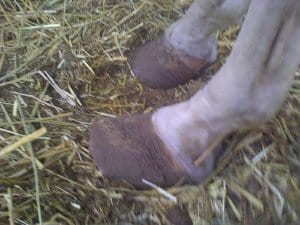
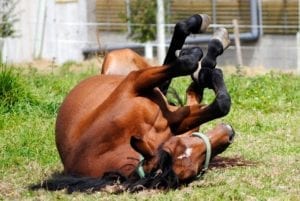
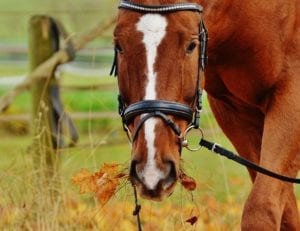
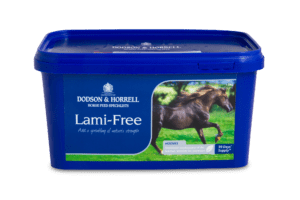

Raelene Boag
Posted at 02:28h, 09 JuneThat’s interesting, we are using Lami free which has the nettle seaweed and rose hip. Placid is cheaper I may need to check it out however I’m very hesitant to change from Lami free as our ponies are loving life cantering around the paddocks where they found it difficult to even stand before
Awesome product Lami-free!!
Thompson and Redwood
Posted at 05:24h, 09 JuneHi Raelene
Yes I would be hesitant to change. The Lami Free is a 1.5kg tub where as the Placid is a 1kg tub. They are both very different formulas but can be fed together for the desired affect. So if they ponies are limintis prone and anxious they can work in conjunction with each other. Great to hear the ponies are now loving life 🙂
Raelene Boag
Posted at 11:31h, 26 JuneAll good I think the original post had s picture of placid. We will stick with Lami free. When your on a good thing stick to it.
Pingback:Managing Laminitis-Prone Horses in Autumn - Thompson and Redwood
Posted at 00:18h, 30 July[…] Autumn can be a very risky time! We’ve covered what laminitis is with Dr Brad Hampton in a previous blog post. A lot of people think of spring as the riskiest time of year for laminitic horses and ponies, but […]